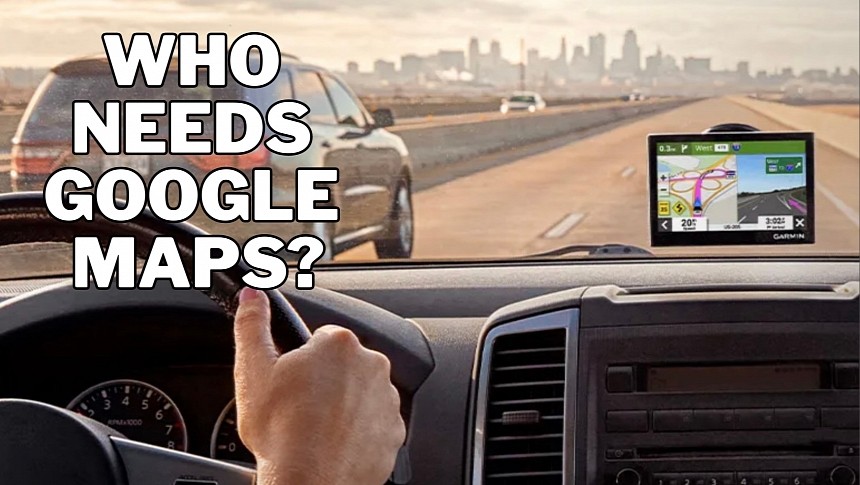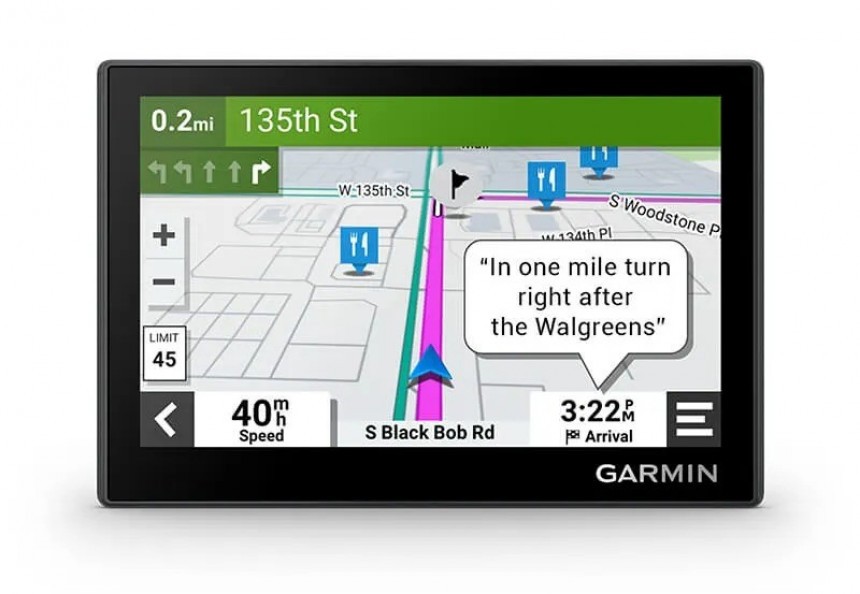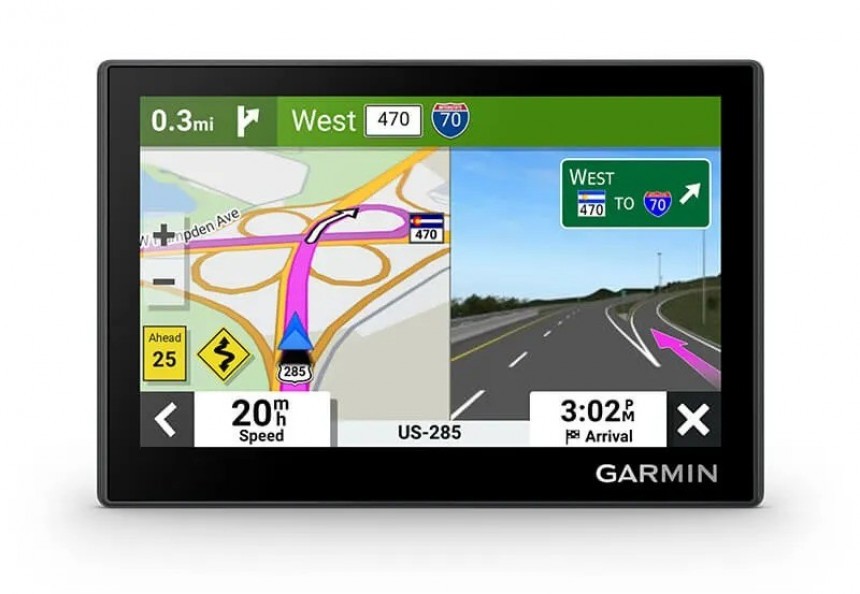They say the days of traditional GPS navigators are long gone, but I personally beg to differ. There’s no doubt mobile navigation apps, be they Google Maps or Waze, dominate this space.
But these apps’ shortcomings turn a GPS navigator into a must-have product in some vehicles. The living proof is none other than the navigation experience in a truck.
Google Maps and Waze lack support for trucks, and while dedicated mobile apps (such as Sygic’s solution) come to fill in the gap, many drivers still want a 100 percent reliable solution. As such, they turn to GPS navigators, keeping their phones in their pockets during the whole drive.
Garmin is a company that still invests in this product category, and one of the most recent unveilings has a clear role: to provide customers with a very cheap alternative to mobile navigation apps.
Garmin Drive 53 is a basic navigator that won’t take anyone by surprise, but on the other hand, it sports a price tag that makes it worth checking out.
And it doesn’t, as the device specifically focuses on providing customers with a budget navigation solution.
It all starts with a 5-inch display that’s smaller than your iPhone screen. That’s right, the device has a screen that measures 5 inches, so it’s almost the same size as the iPhone SE. With a resolution of 800x480 pixels, it’s not a high-quality screen, though you obviously don’t need anything premium for basic navigation needs.
The new navigator tips the scales at just 69 grams and packs a lithium-ion battery with an average life of one day per charge. This is more than enough given you’re supposed to also take a break from driving and rest, so in theory, you have enough time to charge the battery anyway.
With 16GB of storage and microSD card support, Garmin’s cheap navigator covers the essential needs for file storage. You won’t use it for anything other than maps.
Then the device also packs Foursquare points of interest and TripAdvisor ratings. The navigator should therefore help you find points of interest just like you’d be running Foursquare on a mobile device and provide assistance in choosing the best hotels, restaurants, and places to visit.
For navigation features per se, you’re getting speed limit indicators, as well as lane assist with junction view. This tool also displays junction signs, so you’ll be prepared in advance for the next turn. Like other Garmin navigators, this little and cheap model integrates alerts for sharp curves, school zones, red lights, and speed cameras.
The pre-loaded maps cover North America, Puerto Rico, U.S. Virgin Islands, the Cayman Islands, and the Bahamas, but of course, Garmin promises to deliver frequent updates.
The small 5-inch screen is, well, too small, and while it’s being used exclusively for navigation, seeing certain details on the map might be too difficult. Garmin promises a bright screen that “looks good on any dash,” but given its resolution, I really doubt it’s as eye candy as a premium navigator.
Then, the navigation features are very limited compared to a typical mobile navigation app. Google Maps, for example, provides real-time traffic information, accident warnings, updated speed traps, and more. Garmin’s device lacks all of these simply because it’s not connected to the Internet. A version with traffic data is available but is more expensive.
Of course, Garmin’s device also lacks the ability to send traffic reports, something that Waze users have become addicted to.
The biggest shortcoming, however, is the way maps must be updated. Because it lacks OTA updates, the Garmin navigator must be connected to a computer to receive the latest maps. As such, you’re not getting road information as it changes, something that is available in mobile navigation apps, but only when you update the map, assuming Garmin developed a new version.
It’s not hard to figure out why this is such a big drawback. If you drive to a certain location and the route includes road closures that aren’t included in your current map version, the journey time could be significantly increased.
At the end of the day, the number one selling point of Garmin Drive 53 is the price. At $150, it’s the cheapest navigator that’s not built by a generic Chinese brand, so for people who still use traditional paper maps, it’s probably a heck of an upgrade.
Google Maps and Waze lack support for trucks, and while dedicated mobile apps (such as Sygic’s solution) come to fill in the gap, many drivers still want a 100 percent reliable solution. As such, they turn to GPS navigators, keeping their phones in their pockets during the whole drive.
Garmin is a company that still invests in this product category, and one of the most recent unveilings has a clear role: to provide customers with a very cheap alternative to mobile navigation apps.
Garmin Drive 53 is a basic navigator that won’t take anyone by surprise, but on the other hand, it sports a price tag that makes it worth checking out.
The specifications
Considering its price tag ($150 in the United States), nobody should expect the Garmin Drive 53 to sport new-generation hardware or major innovations.And it doesn’t, as the device specifically focuses on providing customers with a budget navigation solution.
It all starts with a 5-inch display that’s smaller than your iPhone screen. That’s right, the device has a screen that measures 5 inches, so it’s almost the same size as the iPhone SE. With a resolution of 800x480 pixels, it’s not a high-quality screen, though you obviously don’t need anything premium for basic navigation needs.
The new navigator tips the scales at just 69 grams and packs a lithium-ion battery with an average life of one day per charge. This is more than enough given you’re supposed to also take a break from driving and rest, so in theory, you have enough time to charge the battery anyway.
The navigation features
While the technical specifications are nothing to drool over, the navigation features are supposed to catch everybody’s attention. First and foremost, the device uses Garmin’s super-accurate maps, and new versions can be installed with Garmin Express. Sure enough, OTA updates would have been nice, but at this price point, you should be happy you’re getting updates in the first place.Then the device also packs Foursquare points of interest and TripAdvisor ratings. The navigator should therefore help you find points of interest just like you’d be running Foursquare on a mobile device and provide assistance in choosing the best hotels, restaurants, and places to visit.
For navigation features per se, you’re getting speed limit indicators, as well as lane assist with junction view. This tool also displays junction signs, so you’ll be prepared in advance for the next turn. Like other Garmin navigators, this little and cheap model integrates alerts for sharp curves, school zones, red lights, and speed cameras.
The pre-loaded maps cover North America, Puerto Rico, U.S. Virgin Islands, the Cayman Islands, and the Bahamas, but of course, Garmin promises to deliver frequent updates.
The pros and the cons
Now that you got to know Garmin’s new navigator, its shortcomings should be more than obvious.The small 5-inch screen is, well, too small, and while it’s being used exclusively for navigation, seeing certain details on the map might be too difficult. Garmin promises a bright screen that “looks good on any dash,” but given its resolution, I really doubt it’s as eye candy as a premium navigator.
Then, the navigation features are very limited compared to a typical mobile navigation app. Google Maps, for example, provides real-time traffic information, accident warnings, updated speed traps, and more. Garmin’s device lacks all of these simply because it’s not connected to the Internet. A version with traffic data is available but is more expensive.
Of course, Garmin’s device also lacks the ability to send traffic reports, something that Waze users have become addicted to.
The biggest shortcoming, however, is the way maps must be updated. Because it lacks OTA updates, the Garmin navigator must be connected to a computer to receive the latest maps. As such, you’re not getting road information as it changes, something that is available in mobile navigation apps, but only when you update the map, assuming Garmin developed a new version.
It’s not hard to figure out why this is such a big drawback. If you drive to a certain location and the route includes road closures that aren’t included in your current map version, the journey time could be significantly increased.
At the end of the day, the number one selling point of Garmin Drive 53 is the price. At $150, it’s the cheapest navigator that’s not built by a generic Chinese brand, so for people who still use traditional paper maps, it’s probably a heck of an upgrade.










